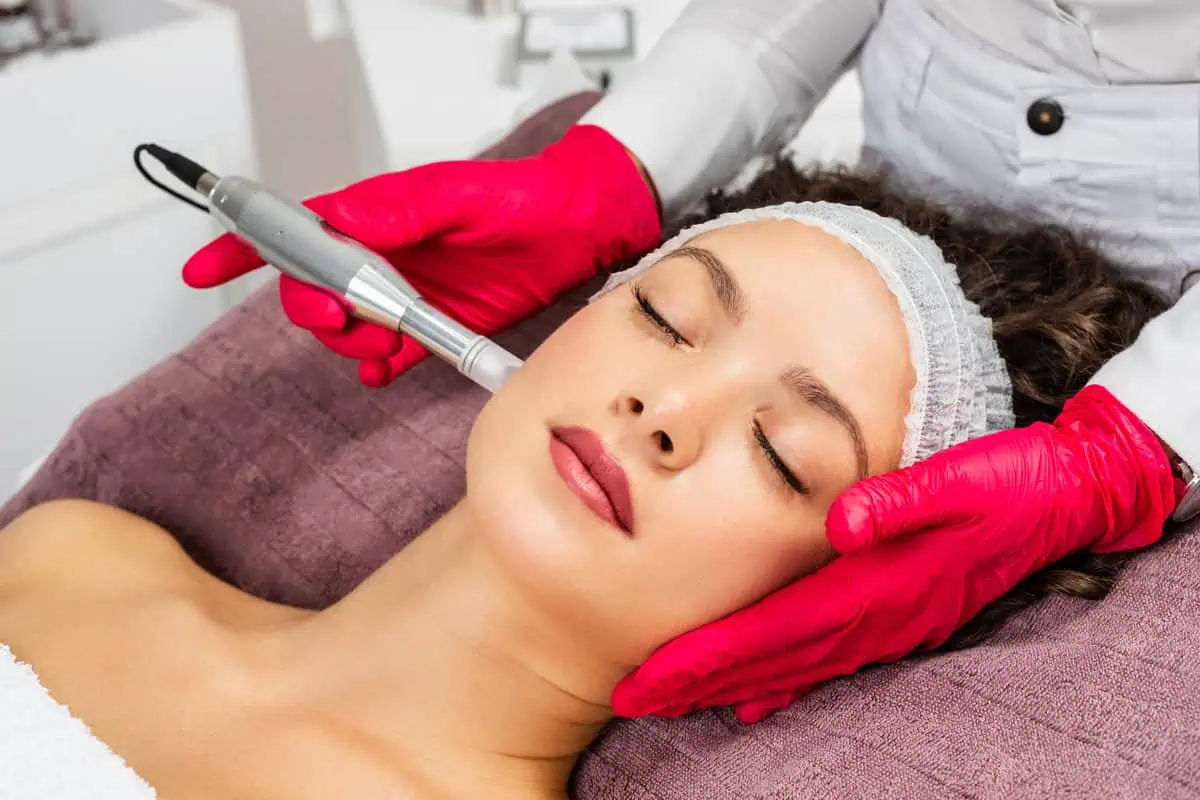Chemical peels have become a powerful tool for revealing fresh, youthful skin. These treatments, backed by scientific research, offer a range of benefits for those seeking to rejuvenate their complexion. Chemical peels employ specially formulated solutions to exfoliate and renew the skin’s surface, unveiling a smoother, more vibrant appearance.
Understanding the science behind chemical peels is key to appreciating their potential. By equipping yourself with knowledge, you can make informed decisions and unlock the potential of chemical peels to achieve the fresh, youthful skin you desire.
Chemical Peels Overview
A chemical peel is a controlled exfoliation process that concerns the application of a chemical solution to the skin. This solution contains specific ingredients, such as alpha-hydroxy acids (AHAs), beta-hydroxy acids (BHAs), or trichloroacetic acid (TCA), which work to remove the outer layers of the skin.
The primary purpose of chemical peels is to rejuvenate the skin by addressing various concerns. These concerns range from dullness, uneven skin tone, and texture irregularities to fine lines, wrinkles, and age spots. Chemical peels effectively help minimize these imperfections’ appearance, revealing smoother, more youthful-looking skin.
Chemical peels come in distinct potencies, ranging from superficial peels that target the outermost layer of the skin to deeper peels that penetrate deeper into the dermis. The depth and intensity of the peel are determined by the specific needs of the individual and the desired outcomes.
The Science Behind Chemical Peels
Chemical peels work primarily through a process known as chemical exfoliation. The active ingredients in the peel solution, such as AHAs, BHAs, or TCAs, act as chemical agents that break down the bonds between dead skin cells. This exfoliation process helps remove the skin’s outermost layer, revealing the fresh, undamaged skin beneath.
One key mechanism by which chemical peels promote skin rejuvenation is by stimulating collagen production. Collagen, a protein found in the dermis, provides structural support to the skin, maintaining its firmness and elasticity. As we age, collagen synthesis inherently declines, leading to wrinkles and sagging skin formation. Chemical peels trigger a controlled injury response in the skin, prompting the production of new collagen fibers. This, in turn, helps to improve skin firmness, smooth out fine lines, and enhance overall skin texture.
Furthermore, chemical peels can also impact melanin, the pigment responsible for skin color. Certain peels, particularly those containing ingredients like glycolic acid or kojic acid, can help fade hyperpigmentation, such as sunspots or post-inflammatory hyperpigmentation caused by acne. By exfoliating the skin and accelerating cell turnover, chemical peels can decrease the formation of these dark spots and facilitate a more even skin tone.
Choosing the Right Chemical Peel
The first step in preferring the right chemical peel is to consult with a qualified skincare professional. They will assess your skin type, evaluate your concerns, and determine the most suitable peel for your needs. Factors such as skin sensitivity, pigmentation issues, acne-prone skin, fine lines, and wrinkles will be considered.
Different types of chemical peels are available, classified based on their depth of penetration into the skin.
- Superficial peels, also known as light or lunchtime peels, gently exfoliate the outermost layer of the skin and are typically well-tolerated by most individuals. They provide a subtle rejuvenating effect and require minimal downtime.
- Medium-depth peels reach slightly deeper into the skin, targeting the outer and upper layers of the dermis. These peels can address more pronounced concerns like moderate wrinkles, uneven skin tone, and superficial scars. They may involve a more extended recovery period and require proper aftercare.
- Deep peels penetrate the dermis, addressing severe skin issues like deep wrinkles, significant sun damage, or scars. These peels often involve a longer recovery time, and special precautions must be taken during healing. Deep peels usually require an experienced professional to perform the treatment.
Professional guidance will help determine the most suitable peel type and strength for your skin’s needs. Remember that chemical peels should be tailored to your circumstances to ensure safety and effectiveness.
The Chemical Peel Process
Understanding what to expect during the chemical peel process can help you feel more prepared and confident about undergoing this skin rejuvenation treatment. Here, we outline the general steps of a typical chemical peel procedure.
- Cleansing: On the day of the treatment, your skin will be thoroughly cleansed to remove any makeup, oils, or impurities. This ensures optimal penetration of the peel solution.
- Application: Using a brush or applicator, the chemical peel solution will be carefully applied to your skin. The solution is typically left on the skin for a specific amount of time, as determined by your skincare professional, based on the peel type and your skin’s response.
- Sensations: During the application, you may experience mild tingling, warmth, or a stinging sensation. These sensations are normal and temporary. However, if you experience excessive discomfort or burning, immediately communicate this to your skincare professional.
- Neutralization: After the appropriate duration, the peel solution is neutralized or removed from your skin using a neutralizing agent or a specific technique, depending on the peel type. This stops the chemical action and prevents any further exfoliation.
Post-Peel Skincare
After undergoing a chemical peel, follow a dedicated post-peel skincare routine to support recovery and protect your newly revealed skin.
- Gentle Cleansing: Use a mild, non-abrasive cleanser to cleanse your skin. Avoid scrubbing or using harsh exfoliants, as your skin may be more sensitive after the peel.
- Moisturize: Hydrate your skin with a gentle, non-comedogenic moisturizer to replenish moisture and promote healing. Look for products containing soothing ingredients such as aloe vera or hyaluronic acid.
- Sun Protection: Shield your skin from harmful UV rays by applying a broad-spectrum sunscreen with an SPF of 30 or higher. Protect your skin from sun exposure to avoid pigmentation issues and compromise the healing process.
- Avoid Harsh Products: Refrain from using harsh or irritating skincare products, such as retinoids, acids, or exfoliants, until your skin fully recovers. Introduce them gradually, as advised by your skincare professional.
- Patience and Gentle Care: Be patient with your skin’s healing process. Avoid picking, scratching, or peeling any flaking skin. Allow it to slough off naturally. Treat your skin gently and avoid excessive rubbing or scratching.
Takeaway
Ready to unlock the power of chemical peels for fresh, youthful skin? Contact The DMC Aesthetics today and take the first step towards rejuvenating your complexion. Our expert skincare professionals will provide personalized consultations, guiding you in choosing the right chemical peel for your specific concerns and skin type. Experience the science-backed benefits of chemical peels, from improved texture and tone to reduced wrinkles and hyperpigmentation.
Trust our experienced team to ensure safe and effective treatments while empowering you with the knowledge to maintain your skin’s health. Don’t wait any longer—transform your skin and boost your confidence. Contact or book an appointment with The DMC Aesthetics now and uncover the radiant, youthful skin you deserve.









